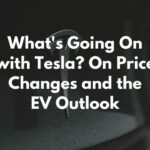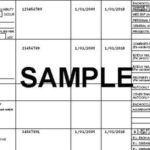Last Updated on February 13, 2025 by inaz Ameera
The global auto industry is in motion, but it’s far from setting speed records. While sales are growing, they’re doing so at a pace that feels more like a steady cruise than a high-speed chase. In 2024, total global car sales reached 74.6 million, and projections for 2025 suggest that number will rise to 77.3 million. It’s an improvement, but not exactly a boom.
At the center of the action, China, the U.S., and Europe continue to dominate the market, though each is facing its own unique challenges. China remains the world’s largest auto market, but growth is showing signs of slowing as government incentives wind down. In the U.S., demand is steady, but high prices and rising financing costs are causing some hesitation among buyers.
KEYPOINTS:
- Car prices, both used and new, remain high despite increasing discounts, with average price cuts up 30% from last year, but financing costs continue to push buyers toward leasing.
- EV growth is slowing while hybrid sales surge, as consumers hesitate on full electrification due to charging infrastructure concerns and higher costs.
- Potential tariffs on Mexican and Chinese imports could drive up car prices and disrupt supply chains.
Discounts Are Up, But So Are Prices
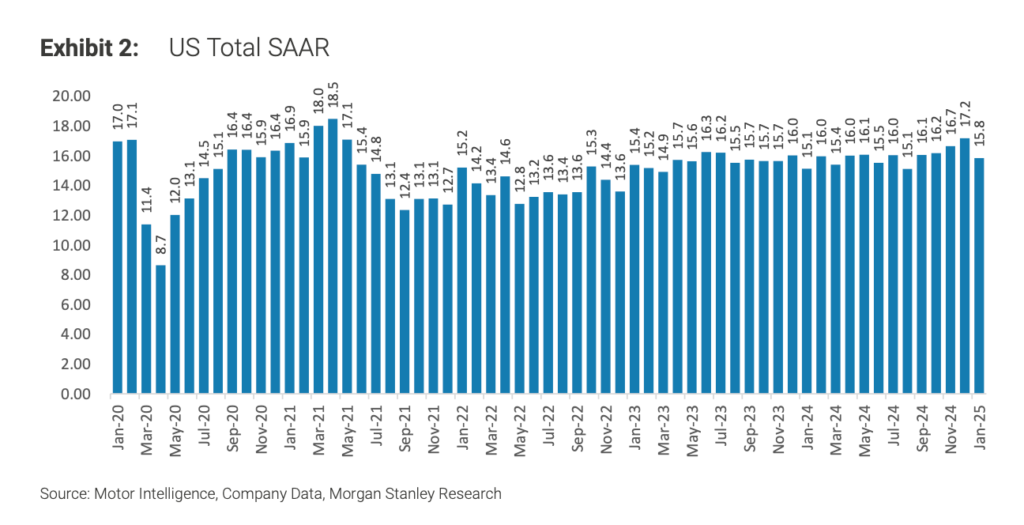
For American car buyers, the situation is a bit of a paradox. There are more cars available, bigger discounts than last year, yet prices still feel painfully high. U.S. auto sales hit 15.8 million in 2024, and estimates for 2025 put that number at 16.3 million. The increase is steady but uninspiring.
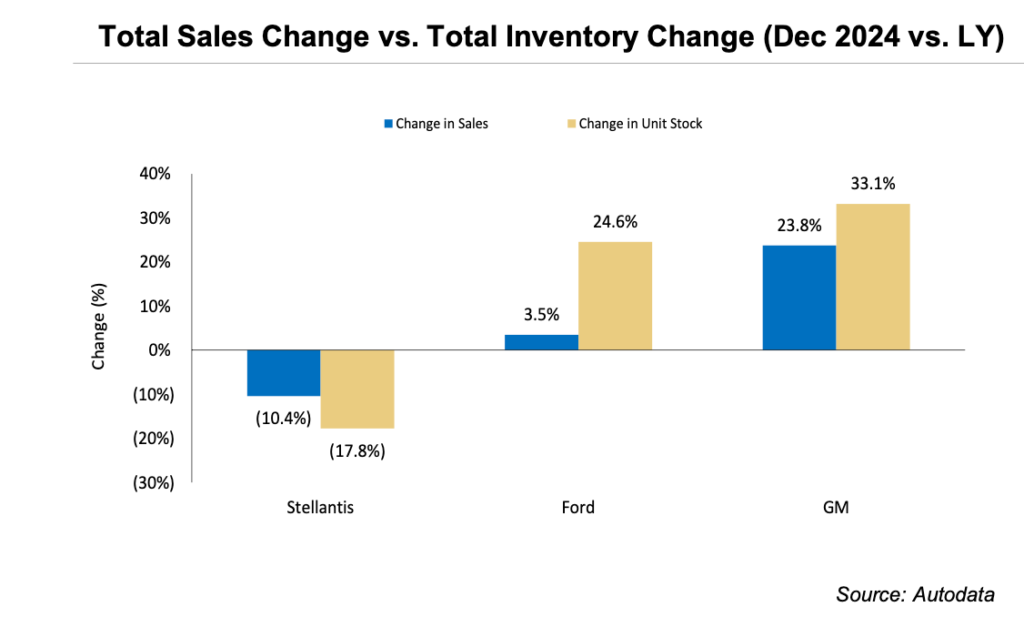
What’s changed, however, is the amount of inventory sitting on dealer lots. Compared to last year, dealerships are carrying more stock, with 62 days’ worth of supply on average, up from 47 days last year.
This should be good news for buyers—after all, when cars sit unsold for too long, dealers start slashing prices. And they’re already doing just that. The average discount per car has climbed to $3,494, a 30% increase from last year, with Asian and European brands leading the price-cutting charge.
However, despite the bigger discounts, again, car prices remain high. The combination of lingering supply chain challenges and increased production costs means that even with markdowns, many buyers still feel priced out. Financing costs aren’t helping either, as higher interest rates make monthly payments steeper, pushing more people to lease instead of buy.
Meanwhile, luxury car sales are booming, proving once again that inflation isn’t much of a concern if you’re shopping in the six-figure price range. Brands like Porsche (+74%), Land Rover (+70%), and Mercedes-Benz (+24%) have all seen major sales increases, indicating that the high-end market remains as strong as ever.
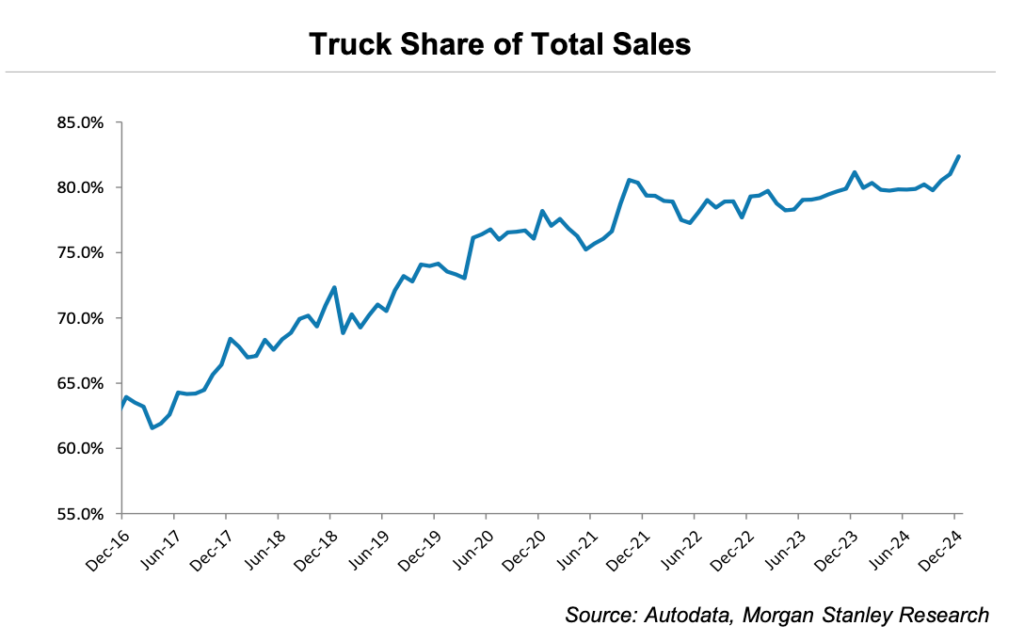
And, as we’ve discussed last month, trucks are still hitting it off! If you’re shopping for an SUV or a truck, you’re in good company—these vehicles now make up a staggering 81% of all U.S. auto sales. Traditional sedans, on the other hand, are on life support, now accounting for less than 19% of the market.
What About Used Car Prices?
After a few months of cooling, used car prices are creeping back up—and it’s happening faster than many expected. According to the Manheim Used Vehicle Value Index, wholesale used car prices have hit their highest point since October 2023, rising 0.4% in January compared to December. Year-over-year, prices are now 0.8% higher.
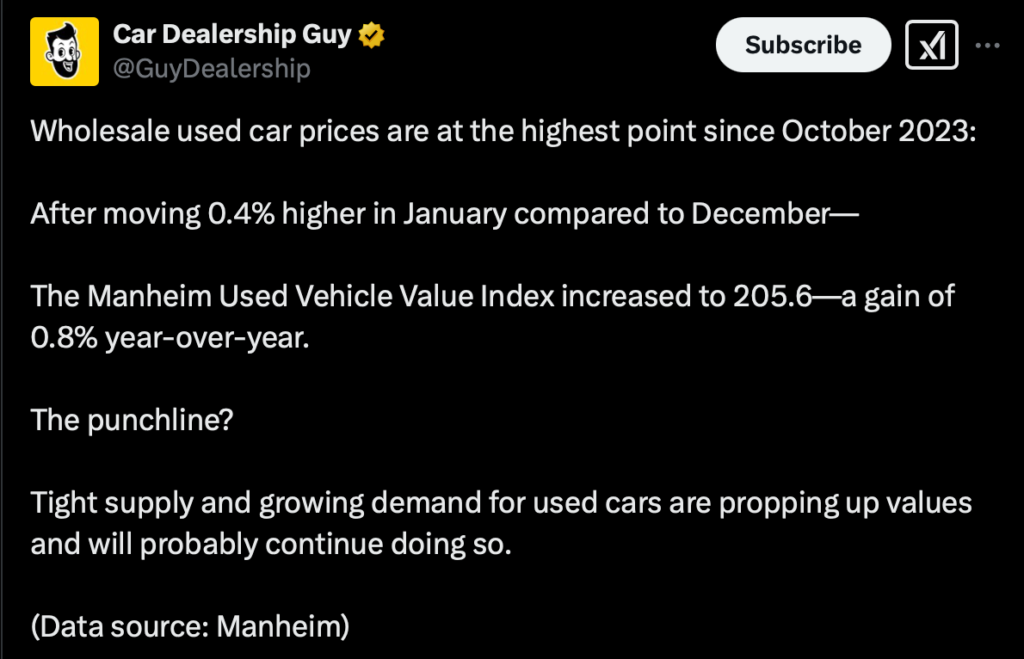
What’s Causing the Price Bump?
Several factors are keeping used car values higher than expected:
- The market still has not fully recovered from supply chain disruptions that reduced the flow of off-lease and rental fleet vehicles.
- With new car prices still high and interest rates making financing tough, many buyers are turning to used cars instead of new ones.
- Since many consumers are holding onto their vehicles longer, dealerships aren’t getting as many trade-ins, further limiting supply.
Question is, will used car prices keep on rising? While prices may fluctuate, the trend suggests that used car values won’t drop significantly anytime soon. With higher demand and fewer vehicles entering the market, prices could remain elevated well into 2025.
For buyers, this means that waiting for a price crash might not be the best strategy. Instead, focusing on older models, high-mileage vehicles, or financing deals may offer the best value.
Who’s Winning?
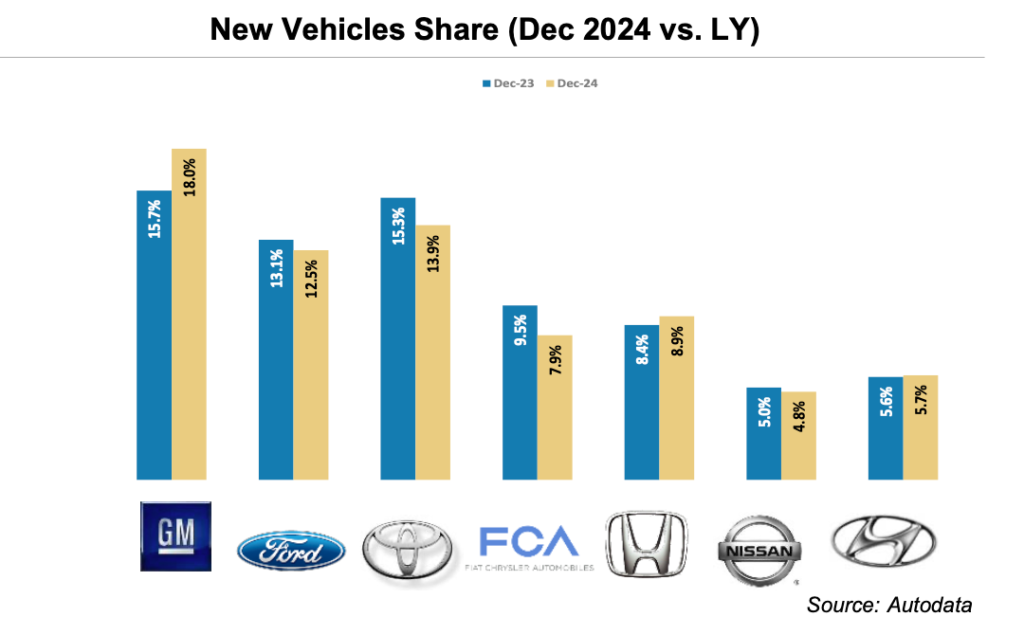
While the U.S. auto market is steady, American automakers are losing market share to Asian and European brands. Ford, GM, and Stellantis (parent company of Jeep, Dodge, and Chrysler) all saw a decline in their market share, even as total vehicle sales remained stable.
On the flip side, Asian brands like Toyota, Honda, Hyundai, and Kia have gained ground, thanks to more fuel-efficient models, strong hybrid sales, and competitive pricing. European brands (Volkswagen, BMW, and Mercedes) are also seeing growth, particularly in the luxury segment.
Even in the EV space, American automakers are facing tougher competition. Tesla’s U.S. market share fell from 52% to 40%, while brands like Hyundai and Kia continue gaining EV market share with well-priced, well-reviewed alternatives.
This shift isn’t just about pricing—Asian automakers have been quicker to capitalize on hybrid technology, which has surged in popularity as EV adoption slows. While U.S. automakers are investing heavily in EVs, they may have underestimated the continued demand for hybrids, allowing Toyota and Honda to dominate that space.
If this trend continues, U.S. automakers will need to rethink their product strategy—whether that means offering more hybrids, better financing options, or stronger incentives to win back buyers.
The EV Market is Growing, But Losing Steam
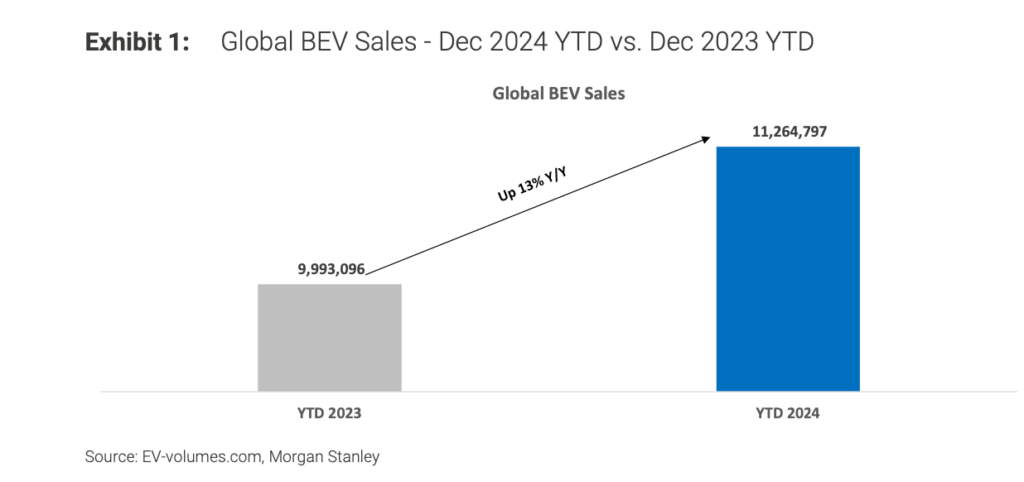
Electric vehicle sales are still on the rise, but the once red-hot growth is starting to cool down. In 2024, 10.6 million EVs were sold globally, and that number is expected to reach 12.4 million in 2025. While the market isn’t shrinking, it’s not accelerating as fast as before.
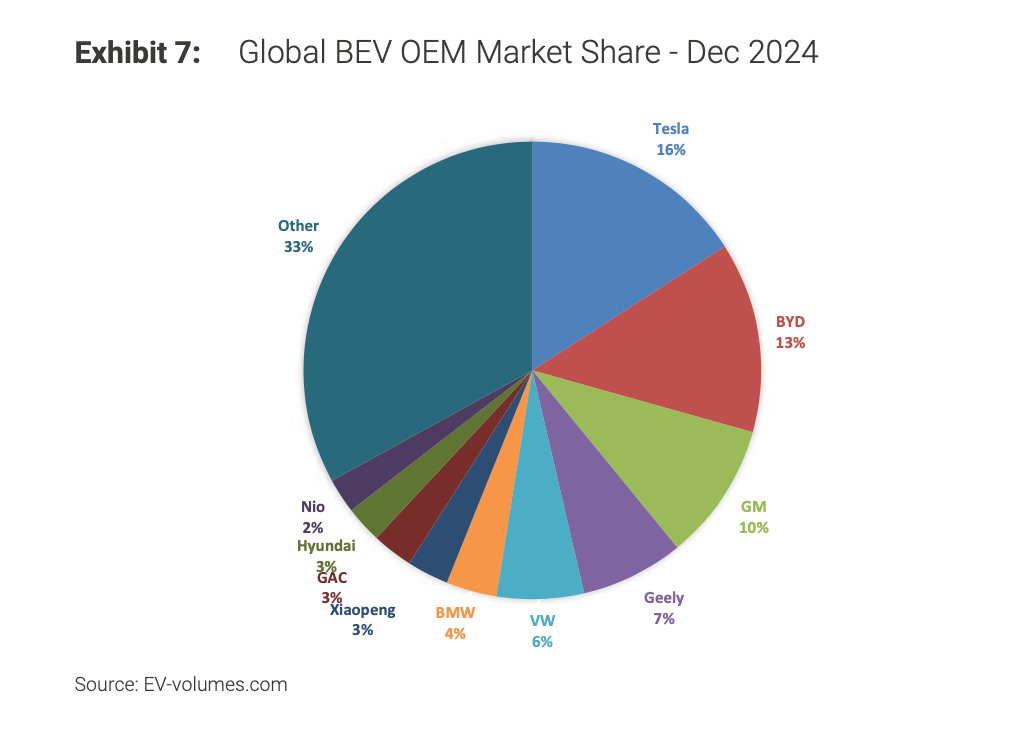
Tesla remains the dominant EV brand in the U.S., but its grip on the market is slipping. The company’s market share has dropped from 52% to 40%, thanks to increased competition from brands like Hyundai, Kia, and GM. Tesla’s recent price cuts have helped keep demand steady, but consumers now have more options than ever when it comes to choosing an EV.
Another major shift in the market? Hybrids are taking off. While EV sales are rising at a moderate pace, hybrid sales have soared by 42% year-over-year. Many consumers seem to like the idea of better fuel efficiency but aren’t quite ready to fully commit to an all-electric future. Concerns about charging infrastructure, battery replacement costs, and long-term reliability are still keeping some buyers on the fence.
Meanwhile, government incentives for EVs are fading in multiple countries, further slowing adoption. While subsidies helped propel early EV sales, policymakers are starting to scale back financial support, which could make consumers more hesitant to make the switch.
The Talk of Tariffs & Trade Wars, Again!
With Donald Trump back in office, tariffs on Chinese and Mexican imports are once again on the table, creating uncertainty in the auto industry. If Mexican-made cars and parts get hit with tariffs, it could drive up prices and disrupt supply chains, particularly for manufacturers like Ford, GM, and Tesla, which rely on Mexico for production.
Tesla’s Gigafactory Mexico could also be impacted, forcing Elon Musk into lobbying mode to avoid disruptions. Meanwhile, tariffs on Chinese EV imports could give U.S. and European automakers some breathing room, preventing cheaper foreign EVs from flooding the market.
With trade tensions heating up, automakers are scrambling to adjust supply chains and shift production to different countries to avoid potential tariffs. While it’s too soon to predict the full impact, one thing is clear: global auto prices could be affected, for better or worse.
What’s Next?
With more cars sitting on lots and discounts growing, March could be a great time for buyers looking for deals—especially on SUVs and trucks. However, EV buyers may want to keep an eye on incentives and government policies, as support for electrification continues to shift.
Luxury brands are expected to keep thriving, while mainstream automakers will likely fight harder for market sharewith competitive financing and new model releases. Meanwhile, tariff decisions in the U.S. could shake up global supply chains, creating potential price fluctuations in the months ahead.
The auto industry is recovering but still facing turbulence. Car prices remain high, but discounts are growing, helping ease some of the financial pain for buyers. EV growth is slowing, hybrids are rising, and tariffs could shake up everything.
For now, the best advice? If you’re in the market for a car, pay close attention to incentives and financing options—and maybe consider a hybrid if you’re not ready for full EV commitment.


